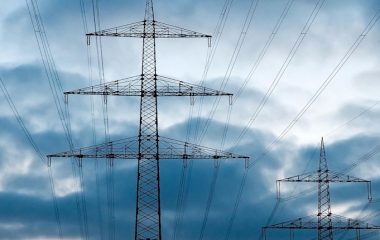
Photo: iStock
The turbine mode capacity of the future pumped storage hydropower plant Blaca amounts to 498 MW while its pumps would work at 489 MW at most, according to the documentation submitted by Croatia’s state-owned Hrvatska elektroprivreda – HEP Group. The facility would be located in Sinjsko polje in Dalmatia, near Split.
The Ministry of Economy and Sustainable Development of Croatia is assessing the environmental impact of the planned pumped storage hydropower project Blaca. Government-controlled power utility Hrvatska elektroprivreda – HEP Group submitted the project via its HEP-proizvodnja electricity production subsidiary.
In addition to its basic purpose, the investment aims to improve flood protection by mitigating the effect of the episodes of surges in the Cetina river, increase irrigation and facilitate the operation of the Orlovac hydropower plant even when water levels are high, the ministry said.
The turbine mode capacity would be 498 MW and the pumps would work at a maximum of 489 MW, HEP Group revealed in its request for impact assessment. In the pump mode, the system would consume excess electricity from wind power plants and solar parks to draw water from the lower reservoir, Gala, into the upper one, called Blaca. When demand in the electricity system rises above the supply, pumped storage hydroelectric plants switch on the turbines to turn the potential energy of the water from the upper lake into electricity.
Annual output estimated at 986 GWh
The location is in Sinjsko polje in the municipality of Otok in the Split-Dalmatia county. It would take the area from below the Gala village in the Galjsko polje plain to the Blaca valley on the slopes of the Kamešnica mountain, according to the documentation.
Several years ago, before the launch of the environmental impact assessment study, the investment was estimated at up to EUR 790 million.
The ministry noted that the pumps would consume an average of 1.29 TWh per year while the turbines would generate 986 GWh. The calculation implies eight hours of operation in pump mode per day and six hours of production for 11 months per annum. The remaining time is for overhauls and inspections.
PSHPP Blaca would consist of three generators
The upper reservoir, Blaca, would span 58.1 hectares and have an operational volume of 13 million cubic meters. The length of the upper tunnel, with six meters in diameter, is envisaged at 1,929 meters while the pipeline under pressure would have a diameter of 4.7 meters and be 1,719 meters long.
In the plan, the pumped storage hydropower plant has three generators. The lower tunnel would be 3,537 meters long and have six meters in diameter. Gala, the lower reservoir, would have a surface of 74 hectares and 2.6 million cubic meters in volume. The Blaca system would be connected to a 400/110 kV transformer. The project includes the construction of a dam.
Excavation would result in excess earth material of an estimated 2.1 million cubic meters and 182,000 cubic meters of rock.
Pumped storage hydroelectric projects have been springing up over the past several years in almost all the countries in the region tracked by Balkan Green Energy News. Such facilities already exist in Slovenia, Serbia, Bosnia and Herzegovina, Bulgaria, Romania and Greece, which also plan to build more of them.


















Be the first one to comment on this article.